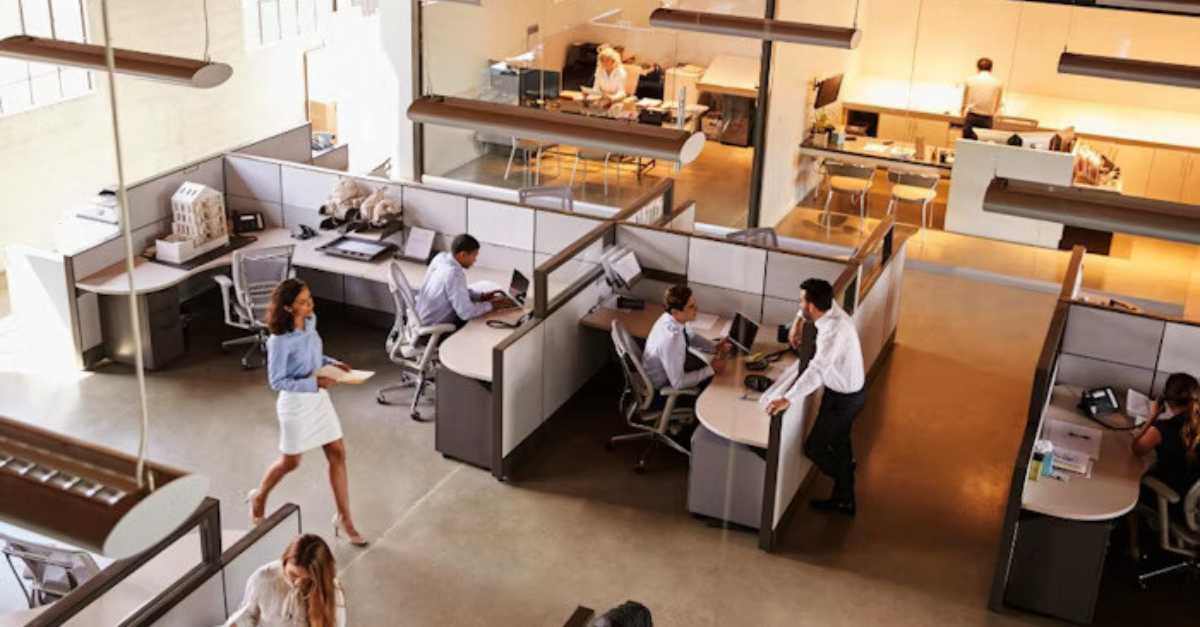
Improve Employee Productivity With Conference Room Scheduling Software & iPad Display
Anywhere, anytime meeting scheduling is a must in the modern office. See how digital signs and kiosks connect your employees and improve your ...
Solutions
Workplace Management Solutions
Real Estate Management Solutions
Maintenance Management Solutions
Energy Management Solutions
Engineering Document Management Solutions
Asset Management Solutions
Automate campus scheduling for classes, meetings, and exams with our EMS software.
Plan and manage conferences effortlessly with EMS software to impress guests and streamline operations.
Boost workplace flexibility and maximize space use with seamless desk and room booking.
Organize workplace or campus events smoothly, creating memorable experiences.
Optimize workspace, manage allocations efficiently, and reduce costs with our space management solutions.
Deliver projects on time and within budget by improving communication, collaboration, and efficiency with our software.
Streamline lease accounting for ASC 842, IFRS, and GASB compliance.
Manage leases efficiently by tracking key dates, analyzing costs, and ensuring compliance.
Centralize data and analytics for better insights, faster negotiations, and revenue growth.
Centralize facility and asset maintenance, automate work orders, and ensure compliance with our CMMS software.
Extend asset life, reduce downtime, and prevent costly repairs with data-driven monitoring.
Prevent equipment failures and extend asset life by detecting and addressing issues early.
Make sustainable, cost-efficient energy decisions by monitoring and optimizing power consumption.
Remotely monitor and control equipment with real-time data to predict issues, boost efficiency, and reduce downtime.
Easily share and collaborate on documents, creating a single source of truth for engineers and contractors.
Manage and analyze assets across their lifecycle to schedule maintenance, reduce downtime, and extend lifespan.
Improve visibility, automate work orders, and ensure compliance for efficient facility and asset management.
Resources
Browse our full library of resources all in one place, including webinars, whitepapers, podcast episodes, and more.
Support
Looking for access to technical support, best practices, helpful videos, or training tools? You’ve come to the right place.
About Accruent
Get the latest information on Accruent, our solutions, events, and the company at large.

Explore what reconfigurating office space requires ― a reconsideration of office density, shared spaces, meeting rooms, and virtual or hybrid meetings.
First, the first key to “the great return to work” is that the office must adapt through design and technology for social distancing to keep everyone safe and comfortable.
When considering this shift, it’s important to keep the “why” in mind: it is not to fear others, but instead to protect one another and to consider your health and the health of those around you. After all, if your office space does not promote the common goals of safety, transparency, and productivity, a successful return to work will never be possible.
This reconfiguration of the office space will require a reconsideration of office density, open spaces, meeting rooms, and virtual or hybrid meetings.
Space itself is an issue. The irony here is that companies have been densifying the office for years: since 2009, square footage per person has steadily declined, and today there is an average of only 7.8 feet of distance between each person. That was the new normal in the modern office, and there’s not much room for social distancing in such an environment.
That’s why it’s important for companies to work back from that in a thoughtful way using phased work, shift work, and enhanced work-from-home capabilities.
First, when it comes to re-opening, phasing teams back in is extremely important. Many companies have realized that their employees have been productive from home offices and that the home office will remain a key pillar in their re-entry plans. In fact, it’s likely that most businesses will only have about 50% of their employees return to work over the next 12 months, and one survey suggests that 25-30% of the workforce will still work from home by the end of 2021. You should keep these numbers in mind, plan that phased approach and consider what that should look like for your business.
Another common approach is the idea of simply splitting your workforce. But this begs the question: who goes into the office on what day? How do you manage your space to accommodate these teams? These are questions that you should consider as you start your thoughtful return to the workplace.
Most importantly, remember that you’re working with human beings who have preferences, desires, and concerns of their own. You need to understand these preferences when making these groupings and keep open lines of communication. Don’t pressure people to come in just so you have them in the office.
Many people want to return to work. They’re eager to get back, and they want to make sure that they’re coming back into a trusted environment.
How do you do that? You need to do it physically and through tech: remove desks, remove chairs, and then offer a way that they can be controlled by technology. To this end, implementing some kind of hoteling gives you the data to reference, giving relevant info on who, when, and where.
Before COVID-19, hoteling seemed to be going the way of the dodo. Now, though, there has been an increased interest in hoteling. Neither models of 1-to-1 seating or free desking and open space lend themselves to people coming back to a trusted environment.
Initially, you might consider restricting the use of open spaces immediately through physical removal, digital removal, and comprehensive cleaning procedures. Long term, it may make sense to turn your “open” spaces—like phone booths, huddle rooms, and lounge areas—into managed and bookable spaces.

Having a booking is very much like booking an airline seat; there is comfort in knowing that you’re going to the airport, you’re getting on a plane, and you know where you’re sitting. The same idea holds when it comes to knowing exactly where you’re going to sit at work, who sat there last, and how safe the space really is.
This, of course, is not possible without a robust hoteling software. For hoteling to work in the modern business environment, you need a single source of truth for how spaces are utilized. If implemented correctly, this will give you visibility for cleaning, utilization, social distancing and monitoring while allowing you to offer areas with better ventilation. Interestingly, these types of spaces are actually becoming more common as businesses look at their build-out plans because they allow for better airflow and more distance between collaborators.
Meeting rooms are a perfect example of a place where you can use digital signage to indicate the status of a space. You can make quick updates like, “those listed here,” and use technology to inform on space statuses, manage cleanliness and availability, or integrate with other platforms to notify cleaning crews of spaces that require cleaning or reconfiguration.
You should also restrict the use of meeting spaces in early phases by doing things like:
You can also use signage to indicate the status of cleanliness and availability or automate the setup and teardown time between bookings for cleaning.
At this point, no one is foreign to video meetings—not even kids and grandparents. This will likely remain true indefinitely in the new normal.
This, in large part, has to do with the fact that unnecessary travel will be restricted for quite a while. The International Airport Transportation Group shared in a recent survey that 40% of travelers anticipate waiting at least 6 months after the virus is contained before flying again—and it is still unclear when that containment will happen. Expect video conferencing to be the norm moving forward, with higher business travel coming at later stages and making a slow recovery, and the the increase of work-from-home situations remaining fairly constant.
Integrating your space and video conferencing technology to create one-step scheduling, then, will be critical. This will call for:

In the next blog in our “great return to work” blog series, we will explore the importance of data-driven visibility in “the great return to work.” This kind of visibility will require the end (at least for now) of the true open office concept and the use of data for monitoring, managing, and responding to space-related concerns. This is the only way to maintain social distancing, sanitization and monitoring.
Explore the Series:
Anywhere, anytime meeting scheduling is a must in the modern office. See how digital signs and kiosks connect your employees and improve your ...
Discover how tackling three key office space management challenges can set your organization up for success as you return to office.
Conference rooms are for more than just meetings. See how you can schedule conference rooms to create spaces that accommodate deep thinking, ...
Subscribe to stay up to date with our latest news, resources and best practices.
* To unsubscribe at any time, please use the “Unsubscribe” link included in the footer of our emails.